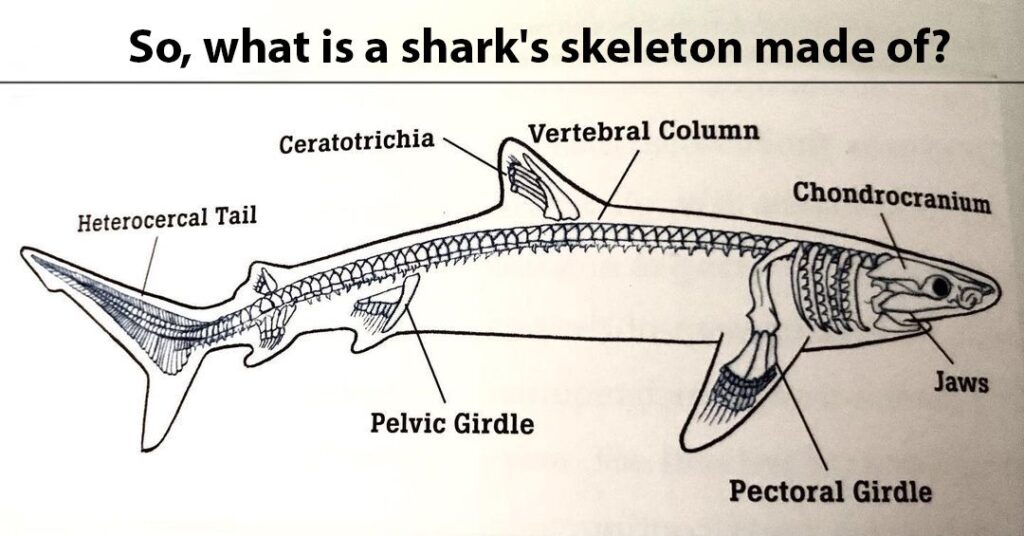Instead of bones sharks have a skeleton made from cartilage

Instead of bones, sharks have a skeleton made from cartilage.

Sharks, those majestic predators of the ocean, possess a unique skeletal structure that sets them apart from most other animals. Instead of bones, sharks have a skeleton made entirely of cartilage. This fascinating fact plays a crucial role in their survival and adaptability.
Cartilage, a tough but flexible connective tissue found in various parts of the bodies of humans and animals, provides the structural framework for a shark’s body. It is lighter than bone, allowing sharks to conserve energy and swim effortlessly through the water. Furthermore, cartilage is more resistant to damage than bone, offering protection against the impact of encounters with prey or potential threats.
While the absence of bones may seem unusual, cartilage provides numerous advantages for sharks. It allows for greater flexibility, enabling these apex predators to move swiftly and navigate tight spaces. The lack of rigid bones also gives sharks an advantage in hunting, as they can rotate their bodies and change direction quickly, surprising their prey with lightning-fast attacks.

The cartilaginous skeleton of sharks is composed of a complex network of fibers and cells immersed in a jelly-like substance called matrix. Contrary to popular belief, the cartilage in sharks is not the same type as the one found in our ears or noses, but rather a specialized type called hyaline cartilage. This type of cartilage is more durable and elastic, providing the necessary support and structure that sharks require.
The absence of bones in sharks’ skeletons also contributes to their buoyancy. Unlike bony fishes, which rely on an air-filled swim bladder to regulate their buoyancy, sharks achieve buoyancy by storing oil in their large livers. The combination of lightweight cartilage and oil-filled livers allows sharks to remain in a state of neutral buoyancy, effortlessly gliding through the water column without sinking or floating to the surface.
Understanding the unique skeletal composition of sharks not only sheds light on their remarkable evolutionary adaptations but also highlights the importance of cartilage as a versatile and resilient connective tissue. By having a cartilaginous skeleton, sharks have evolved a body structure that enables them to thrive in their underwater realm.
In conclusion, the fact that sharks have a skeleton made from cartilage instead of bones is a testament to their incredible adaptability and survival strategies. The lightweight, flexible, and durable nature of cartilage allows sharks to be agile hunters and efficient swimmers. This remarkable characteristic has played a significant role in shaping these formidable predators throughout their existence.
Source: Sport Diver
Related Posts
Quick Links
Legal Stuff

